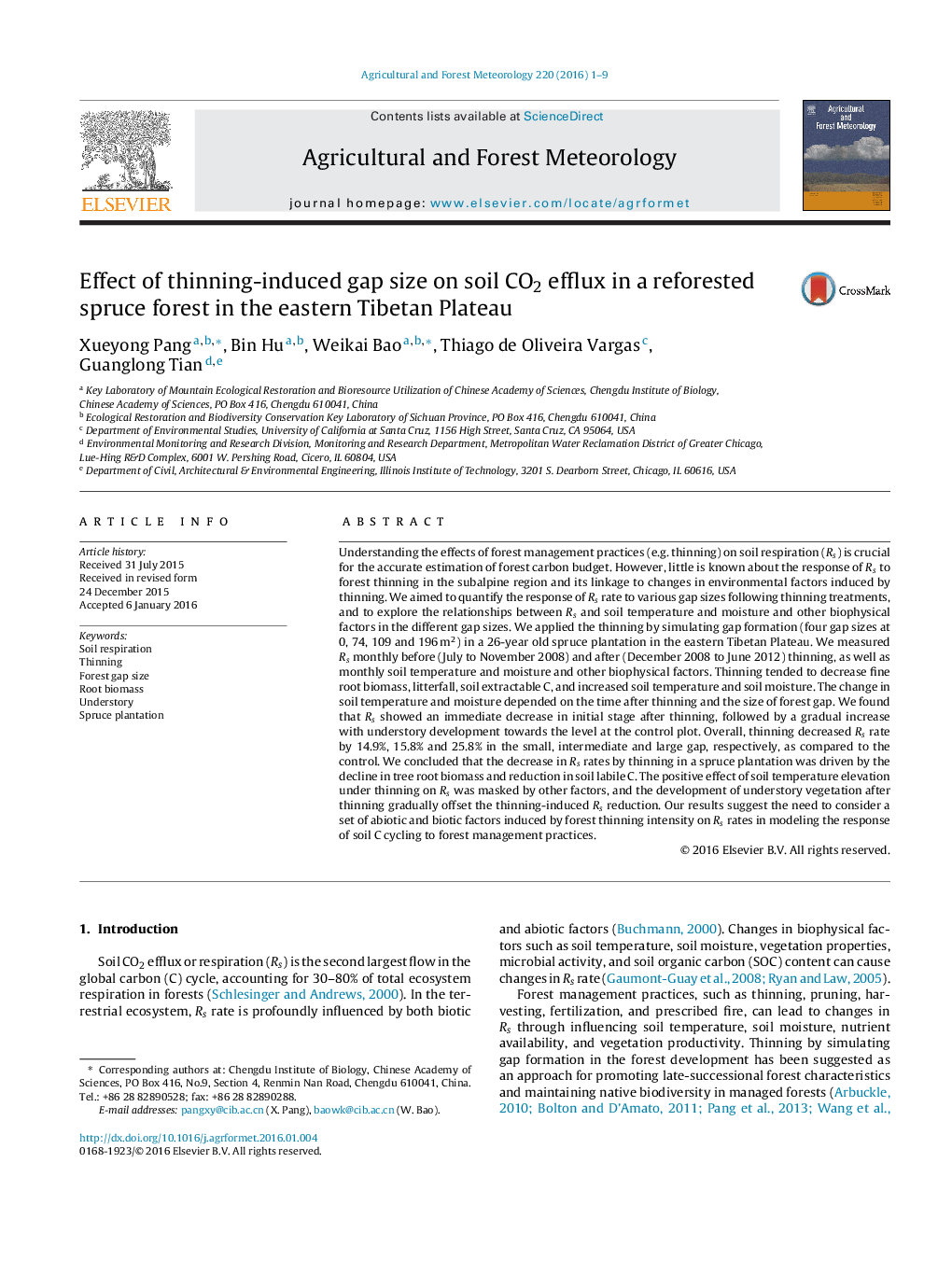| کد مقاله | کد نشریه | سال انتشار | مقاله انگلیسی | نسخه تمام متن |
|---|---|---|---|---|
| 6536974 | 158310 | 2016 | 9 صفحه PDF | دانلود رایگان |
عنوان انگلیسی مقاله ISI
Effect of thinning-induced gap size on soil CO2 efflux in a reforested spruce forest in the eastern Tibetan Plateau
ترجمه فارسی عنوان
اثر اندازه شکاف ناشی از نشت بر روی خروجی دی اکسید کربن در یک جنگل های جنگلی در فلات شرقی تبت
دانلود مقاله + سفارش ترجمه
دانلود مقاله ISI انگلیسی
رایگان برای ایرانیان
کلمات کلیدی
تنفس خاک، تنزل اندازه شکاف جنگل، زیست توده ریشه، معما، کاشت قارچ،
موضوعات مرتبط
مهندسی و علوم پایه
علوم زمین و سیارات
علم هواشناسی
چکیده انگلیسی
Understanding the effects of forest management practices (e.g. thinning) on soil respiration (Rs) is crucial for the accurate estimation of forest carbon budget. However, little is known about the response of Rs to forest thinning in the subalpine region and its linkage to changes in environmental factors induced by thinning. We aimed to quantify the response of Rs rate to various gap sizes following thinning treatments, and to explore the relationships between Rs and soil temperature and moisture and other biophysical factors in the different gap sizes. We applied the thinning by simulating gap formation (four gap sizes at 0, 74, 109 and 196Â m2) in a 26-year old spruce plantation in the eastern Tibetan Plateau. We measured Rs monthly before (July to November 2008) and after (December 2008 to June 2012) thinning, as well as monthly soil temperature and moisture and other biophysical factors. Thinning tended to decrease fine root biomass, litterfall, soil extractable C, and increased soil temperature and soil moisture. The change in soil temperature and moisture depended on the time after thinning and the size of forest gap. We found that Rs showed an immediate decrease in initial stage after thinning, followed by a gradual increase with understory development towards the level at the control plot. Overall, thinning decreased Rs rate by 14.9%, 15.8% and 25.8% in the small, intermediate and large gap, respectively, as compared to the control. We concluded that the decrease in Rs rates by thinning in a spruce plantation was driven by the decline in tree root biomass and reduction in soil labile C. The positive effect of soil temperature elevation under thinning on Rs was masked by other factors, and the development of understory vegetation after thinning gradually offset the thinning-induced Rs reduction. Our results suggest the need to consider a set of abiotic and biotic factors induced by forest thinning intensity on Rs rates in modeling the response of soil C cycling to forest management practices.
ناشر
Database: Elsevier - ScienceDirect (ساینس دایرکت)
Journal: Agricultural and Forest Meteorology - Volume 220, 15 April 2016, Pages 1-9
Journal: Agricultural and Forest Meteorology - Volume 220, 15 April 2016, Pages 1-9
نویسندگان
Xueyong Pang, Bin Hu, Weikai Bao, Thiago de Oliveira Vargas, Guanglong Tian,
